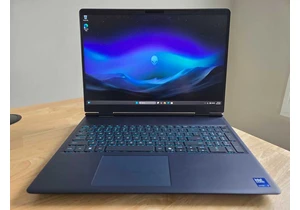Expert's Rating
Pros
- Good overall 20Gbps performance
- Slim, good-looking form factor
- Competitively priced, especially the 4TB capacity
Cons
- Slow 450GB write due to secondary cache exhaustion
Our Verdict
The Adata SD810 is an affordable, 20Gbps USB SSD, and currently a bargain in the 4TB capacity. It breezed through the majority of our tests, but slowed drastically in the 450GB write, which will only affect the rare user.
Best Prices Today: Adata SD810 20Gbps USB SSD
The Adata SD810 was a bit of déjà vu for me, sporting the same sculpted form factor of the previously reviewed SE800 and SE880. Being black, it’s darker than it’s cousins, though it ships in hot pink box — that’ll get your attention in the retail space.
As far as I know, there’s no partnership with T-Mobile, but the SD810 is still a worthy competitor for your 20Gbps USB storage buck.
Further reading: See our roundup of the best external drives to learn about competing products.
What are the Adata SD810’s features?
The Adata SD810 is a svelte USB 3.2×2, 20Gbps external SSD measuring around 2.84-inches long, by 1.72-inches wide, by 0.48-inches thick. It weighs around 1.4 ounces and is basically a rectangle with curved sides and large, sculpted indentations running from end cap to end cap.
Speaking of which, the captive end cap covering the Type-C port wasn’t particularly easy to remove the first time. Partly due to not knowing how much force to employ — I try not to break or disfigure the test products.
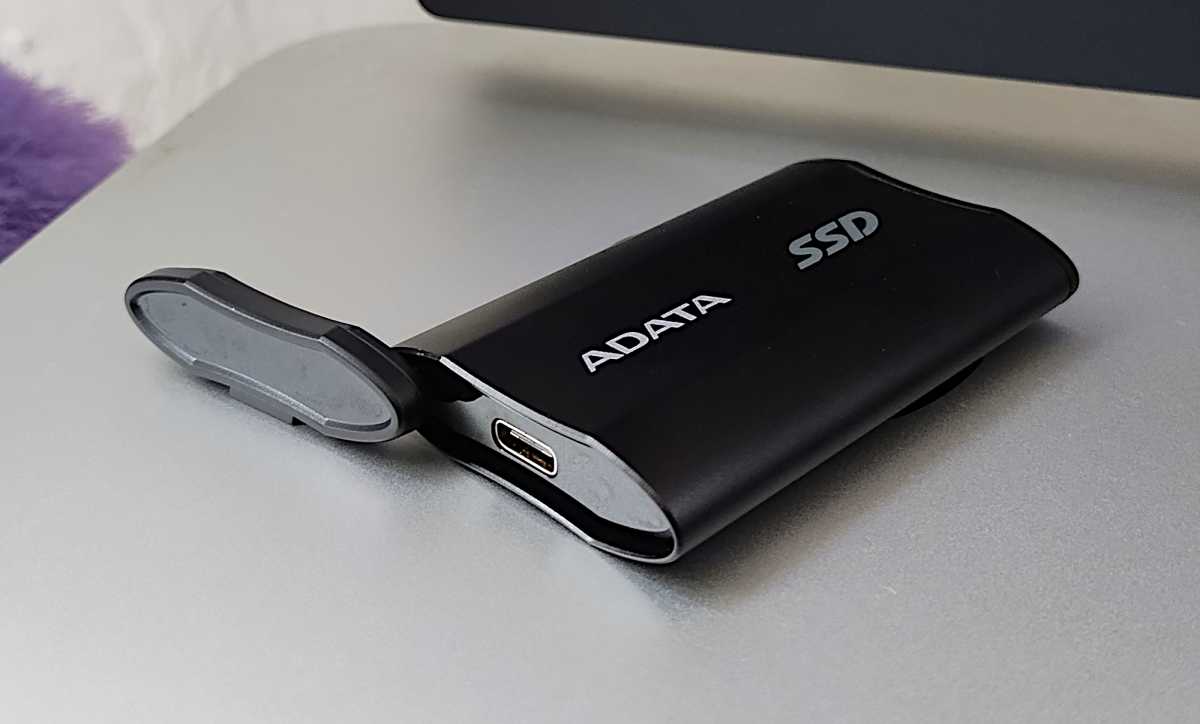
<div class="scrim" style="background-color: #fff" aria-hidden="true"></div>
</div></figure></div>While Adata wasn’t forthcoming on the actual internals in use, given the 2GBps read performance, they’re NVMe; and with sustained writes dropping to slightly below 250MBps when secondary cache (NAND written as SLC) ran out, the NAND is almost certainly QLC.
Adata warranties the SD810 for five years — the norm, though that assumes you don’t use a drill press on the unit or try to write exabytes worth of data to it every six months. Big hint on the latter: You’ll wear out the drive long before that.
The 4TB version of the SD810 is a particularly good buy — as long as your workload doesn’t entail the regular writing of very large files.
How much does the Adata SD810 cost?
At the time of this writing, Adata said the SD810 SSD was available in 500GB, 1TB, 2TB, and 4TB capacities for $60, $100, $160, and $340, respectively. Those prices are about average, with the exception of the 4TB, which is a rather nice bargain — even before you take into account that Amazon currently has the 4TB SD810 listed at just $300!
The SD810 was very fast at most of the benchmarks, but that can be said of most 20Gbps USB 3.2×2 SSDs. For everyday use, it’s aces. However, it’s not the drive you want for heavy-duty video editing and the like. Its NAND (likely QLC) writes at only 250MBps once the secondary cache runs out.
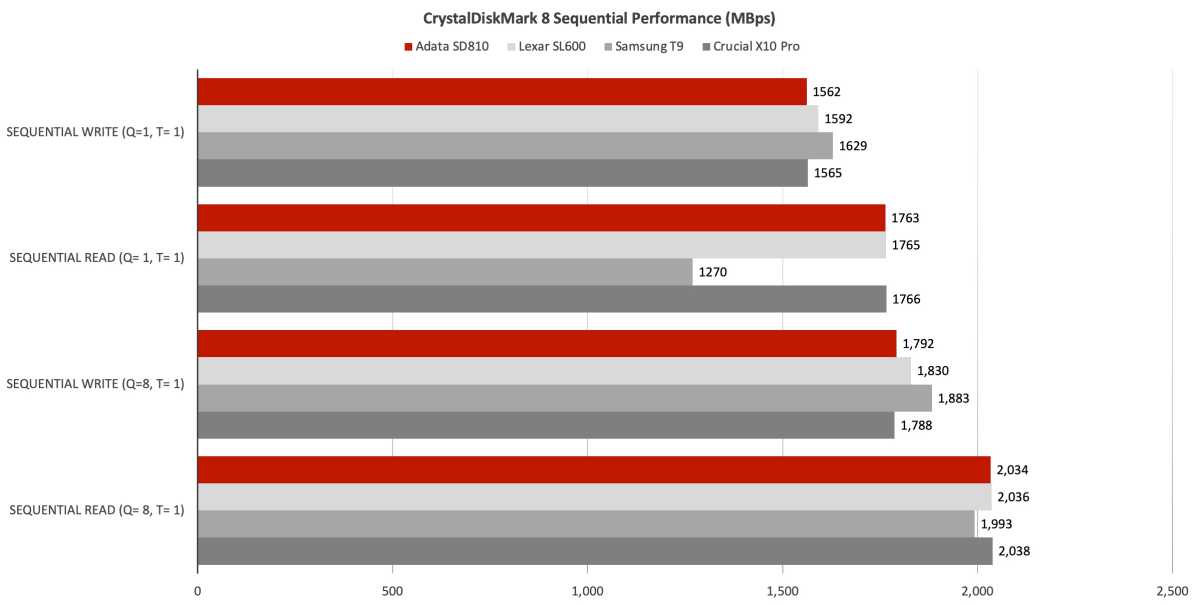
Right-click and select “Open image in new tab” to see more detail.
Right-click and select “Open image in new tab” to see more detail.
<div class="lightbox-image-container foundry-lightbox"><div class="extendedBlock-wrapper block-coreImage undefined"><figure class="wp-block-image size-large enlarged-image"><img decoding="async" data-wp-bind--src="selectors.core.image.enlargedImgSrc" data-wp-style--object-fit="selectors.core.image.lightboxObjectFit" src="" alt="" class="wp-image-2261283" width="1200" height="606" loading="lazy" /><figcaption class="wp-element-caption">The SD810 was on par for a top 20Gbps SSD in the CrystalDiskMark 8 sequential transfer tests. Longer bars are better. <br><br>Right-click and select “Open image in new tab” to see more detail.</figcaption></figure></div> </div></figure></div>Just FYI, secondary caching on SSDs is done by writing the NAND as one-bit SLC (writing a single bit takes far less time) rather than the full 4-bit QLC (or 3-bit TLC). Far less error-checking is required when there are only two possible voltage states: charged/not-charged, rather than the eight states with TLC and 16 with QLC.
The SD810’s random 4K performance was generally on target for a 20Gbs USB 3.2×2 (there is also USB4 20Gbps) SSD.
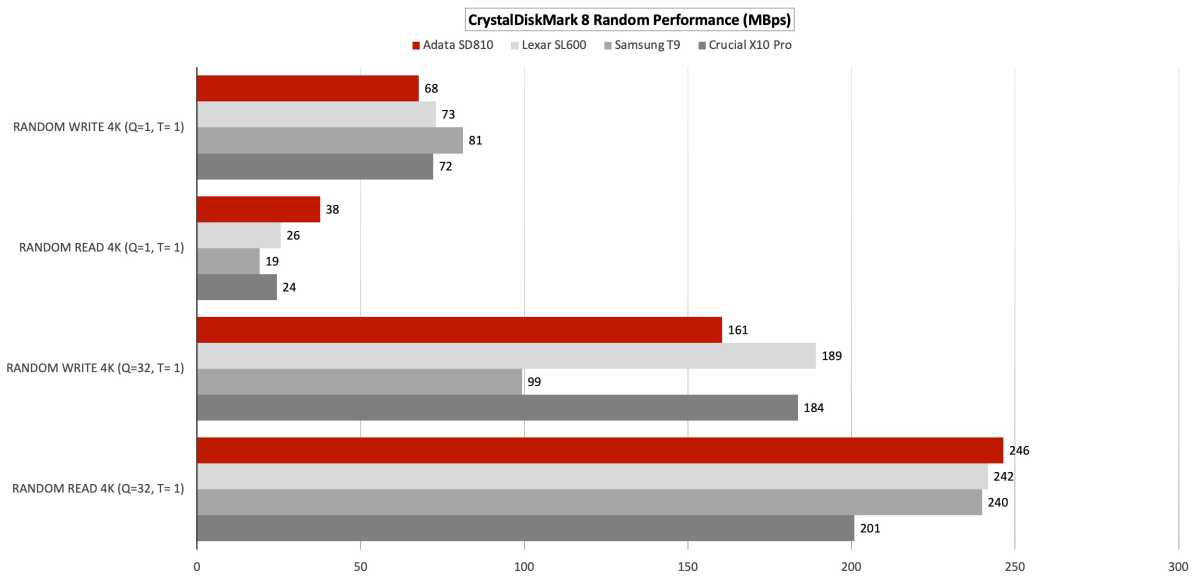
Autentifică-te pentru a adăuga comentarii
Alte posturi din acest grup
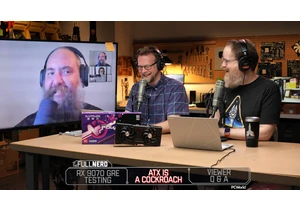
Welcome to The Full Nerd newsletter—your weekly dose of hardcore PC h
PCs have a reputation for being staid and sort of business-like, righ

Whether it’s a smart TV, laptop, or coffee machine, more and more dev

If you’re looking to upgrade your home office computer, then your bes
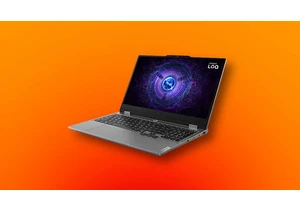
Not every gaming laptop has to cost a fortune. The Lenovo LOQ 15IRX9

Windows runs well, most of the time. But if the system suddenly start
